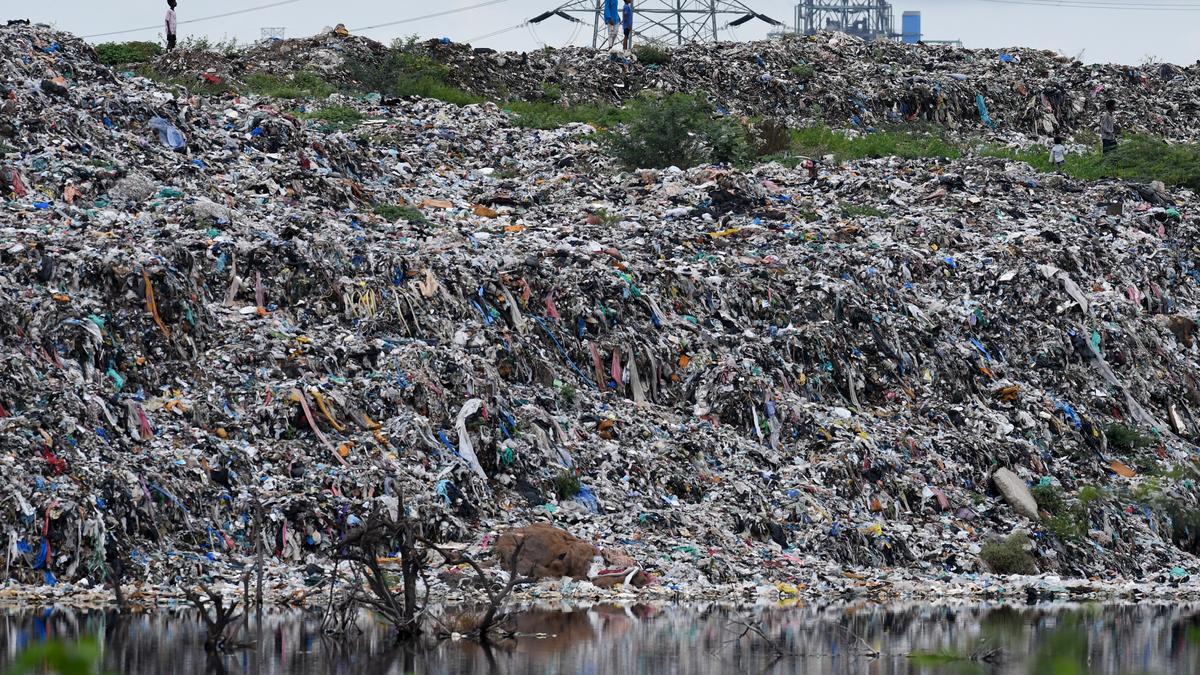
Taking health into consideration, is garbage incineration the way forward to tackle waste? Premium
The Hindu
Investigative report on Delhi's WTE incinerators and Chennai's Climate Action Plan highlights health and environmental risks.
A recent investigative report by the New York Times on Delhi’s Waste-To-Energy (WTE) incinerators, analysed 150 air and soil samples gathered over a five-year period, from 2019 to 2023. The lead and arsenic-laced smoke and ash that contained as many as eight times the permissible levels of heavy metals such as cadmium has been a damning indictment of the capital’s WTE scene. In the capital city where people are already struggling to breathe, the impact of such actions can best be described as disastrous.
In June 2024, the Tamil Nadu government released the first Climate Action Plan for Chennai (CCAP) charting out pathways to achieve carbon neutrality in the city by 2050, which is two decades ahead of the national vision. The report rightly points out that improper management of Municipal Solid Waste (MSW) is the third biggest contributor to carbon emissions in the city. Therefore, the proposal to set up a Waste-to Energy (WTE) plant in Kodungaiyur (in Chennai) to burn about 2,100 tons of garbage per day, on the hooves of these analyses and recommendations, comes as something of a disappointment, even shock.
A WTE incinerator is essentially a massive material destructor, which, on burning its feed, releases a litany of pollutants -- inorganic substances (such as carbon monoxide, carbon dioxide, sulphur oxides, nitrogen oxides, silicates, inorganic ash, soot, metal and metalloids, including cadmium, cobalt, copper, lead, mercury, antimony, arsenic) ; organic substances (volatile organic compounds, hydrocarbons, dioxins, polycyclic aromatic hydrocarbons); and particulate matter. The health impacts of WTE incineration are therefore an amalgamation of all the above toxins, and include respiratory problems, asthma, headaches, skin ailments, cancer, kidney diseases, Parkinson’s, cardiovascular disease, nervous disorders and diabetes among others.
The particular vulnerability of children and pregnant women to these toxins is well documented with a study near the Okhla WTE plant finding that children there were likely to have lower lung function and lower IQs. Pregnant women were advised not to live in the area due to risks to the growing foetus.
The health risks posed by incineration are not limited to just the actual process of burning matter. They begin as early as the waste hauling process (imagine the chronic exposure of host communities to heavy-duty trucks that constantly ply neighbourhood roads), continuing right through to the removal of the incinerator’s by-products (bottom ash, fly ash, boiler ash and other residues). While the ash must be properly treated and disposed of in hazardous waste landfills to minimise its environmental and health impacts, it is not unusual to find toxic ash just dumped in neighbourhoods (as reported by the New York Times study) or in planned moves, used as road and construction material or food production, reintroducing the toxins into the environment and our bodies, via the food chain.
Watch | What is incineration?
Incineration is being touted as a quick fix for Chennai’s waste mountains. Our woes, though, arise not from the decades-old dumpyards that we want gone, but the glaring inefficiencies throughout the waste system that feed these mountains of waste.





















 Run 3 Space | Play Space Running Game
Run 3 Space | Play Space Running Game Traffic Jam 3D | Online Racing Game
Traffic Jam 3D | Online Racing Game Duck Hunt | Play Old Classic Game
Duck Hunt | Play Old Classic Game











